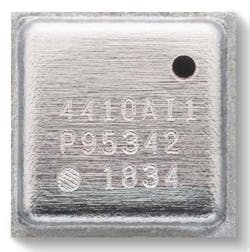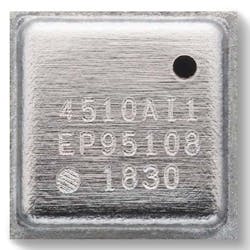Renesas Unveils New Firmware for Air-Quality Sensors
This article appeared in Microwaves & RF and has been published here with permission.
What you’ll learn
- Insight into air-quality sensors
- Air-quality standards
Updated firmware for Renesas’ line of ZMOD digital air-quality sensors will allow engineers to configure the sensors to support the latest green air-quality standards for commercial and public buildings. Thus, according to the company, they’re the first sensors capable of adhering to multiple global standards. As autonomous HVAC systems that can monitor air quality become the norm, the sensors are able to work together to monitor and detect harmful gases inside those buildings.
ZMOD sensors provide support for commercial and public standards as well as environmental standards via its digital gas sensors, which are featured with the ZMOD4410 indoor air-quality sensor and the ZMOD4510 outdoor air-quality sensor. They can be configured via cloud-based connections, enabling users to implement support for building standards in countries around the globe. Moreover, support for the ZMOD sensors can be utilized in a wide range of platforms, including HVAC systems, smoke detectors, thermostats, and smart appliances.
Integated on the sensor is a 12-LGA assembly equipped with a gas-sensing element and a CMOS signal conditioning IC. The sensor output, based on embedded AI, is trained via machine-learning algorithms for detection accuracy and part-to-part consistency. The AI detects trace gases in indoor environments, providing concentration estimates and health or cognitive impacts defined by industry standards.
The firmware libraries allow for the sensor to alter its behavior to support different rooms, such as kitchens, bedrooms, and bathrooms, if needed. There’s also a low-power configuration for battery-powered applications.
The sensing element takes advantage of a silicon-based MEMS structure and a metal-oxide chemresistor to detect gases. The signal conditioner controls the sensor temperature and measures the metal-oxide resistance.
The ZMOD4510 also uses AI for gas detection and measurement—specifically machine learning for sensor output to determine the Air Quality Index (AQI) created by the U.S. Environmental Protection Agency (EPA). As with the ZMOD4410, the 4510 can also be used in low-power mode, depending on the application.
Renesas has combined the sensors with other devices in its portfolio, including microcontrollers, power devices, and wireless platforms for increased performance in a number of applications. Both sensors are available as standalone chips or in an evaluation kit, complete with a microcontroller board with an I2C-to-USB communication interface.
About the Author
Cabe Atwell
Technology Editor, Electronic Design
Cabe is a Technology Editor for Electronic Design.
Engineer, Machinist, Maker, Writer. A graduate Electrical Engineer actively plying his expertise in the industry and at his company, Gunhead. When not designing/building, he creates a steady torrent of projects and content in the media world. Many of his projects and articles are online at element14 & SolidSmack, industry-focused work at EETimes & EDN, and offbeat articles at Make Magazine. Currently, you can find him hosting webinars and contributing to Electronic Design and Machine Design.
Cabe is an electrical engineer, design consultant and author with 25 years’ experience. His most recent book is “Essential 555 IC: Design, Configure, and Create Clever Circuits”
Cabe writes the Engineering on Friday blog on Electronic Design.



